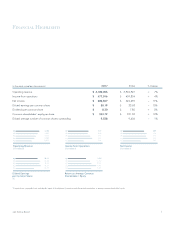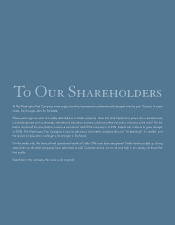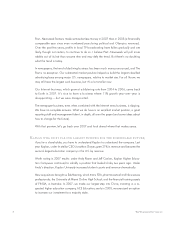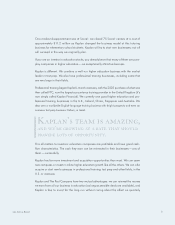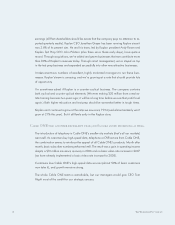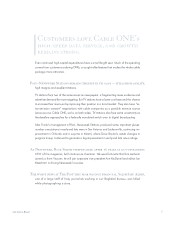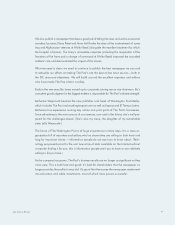Washington Post 2007 Annual Report Download - page 12
Download and view the complete annual report
Please find page 12 of the 2007 Washington Post annual report below. You can navigate through the pages in the report by either clicking on the pages listed below, or by using the keyword search tool below to find specific information within the annual report.
The Washington Post Company could provide a growing stream of operating income to
shareholders during the next few years, thanks to Kaplan and Cable ONE; at the same
time, we may be able to bring The Post through the transition to new readership and rev-
enues. More than that, we can’t promise. The company will be willing to invest money on
a transition at The Post and Newsweek as long as there is a successful outcome in sight.
Why not spin off The Post? Or “reengineer” the company in some other way? This won’t
happen. We aim to grow the long-term value of the company for shareholders, not to
shuffle the cards in a way that may (or may not) produce a higher stock price today.
The company poured money into Kaplan University and into washingtonpost.com when
they were growing, but the strong possibility of a good outcome was pretty clear in each
case (at KU, an outcome as good as the one Andy Rosen and his team provided was a
100-to-1 shot).
In one respect, investing in The Post today resembles what Eugene Meyer was doing in the
1930s and ’40s: after buying The Post at a bankruptcy sale, he was (in Warren Buffett’s
words) fishing in a big pond.
But Mr. Meyer could be more certain than we are that economic success would accompany
winning. In his day, the largest-circulation paper in any city was a valuable business. No
newspaper-plus-Internet business is succeeding today by dominating its market, no matter
how big.
The Post has a unique chance to be the largest source of Internet news in the Washington
area and a substantial national news force. An economically successful outcome is not at
all certain, but we have a much greater opportunity than most newspapers do.
The Washington Post Company
10
The Post has a unique chance
to be the largest source of Internet
news in the Washington area and a
substantial national news force.



